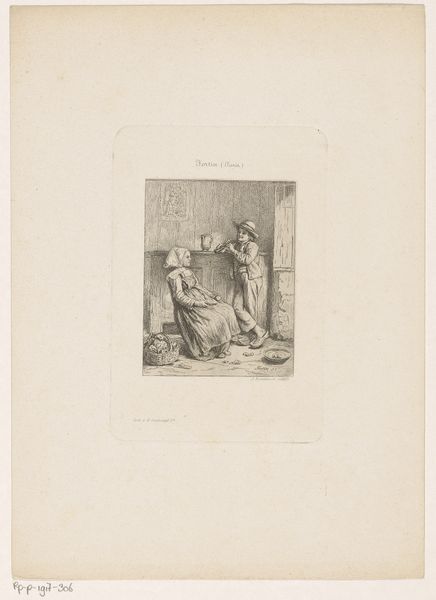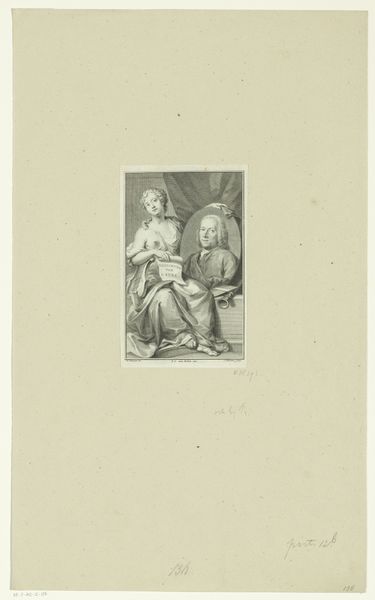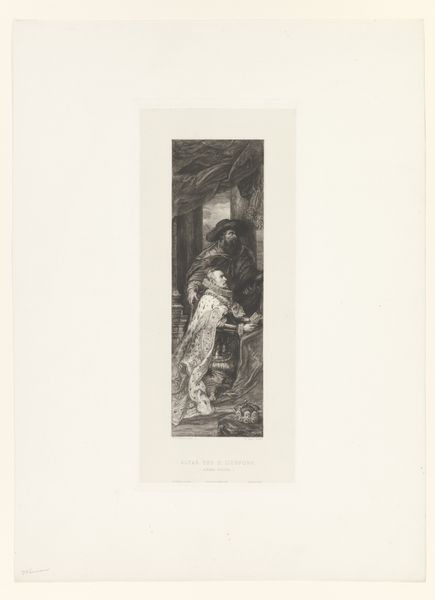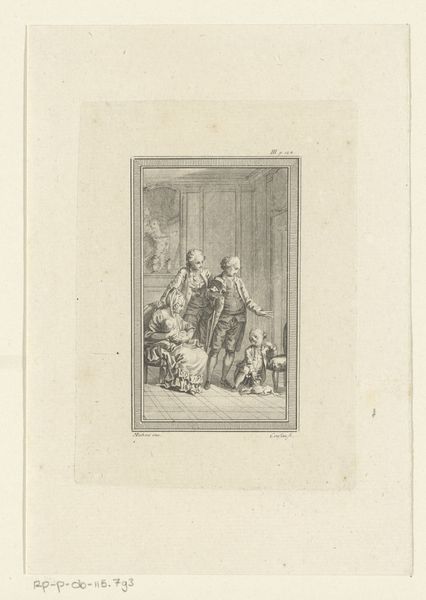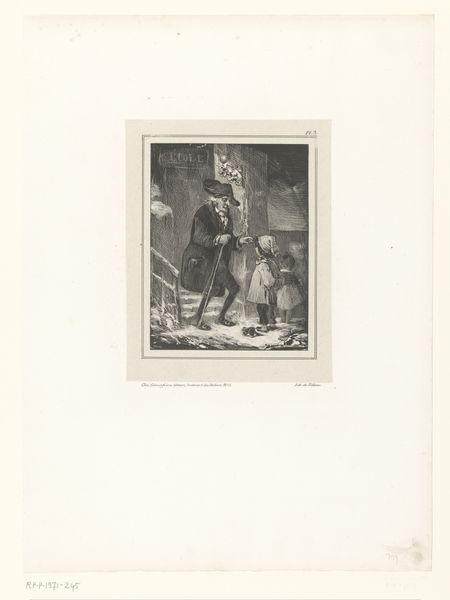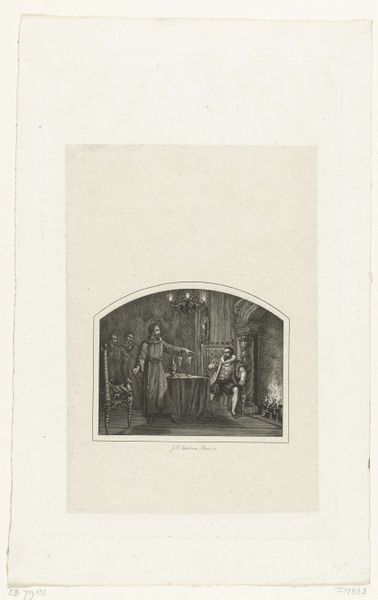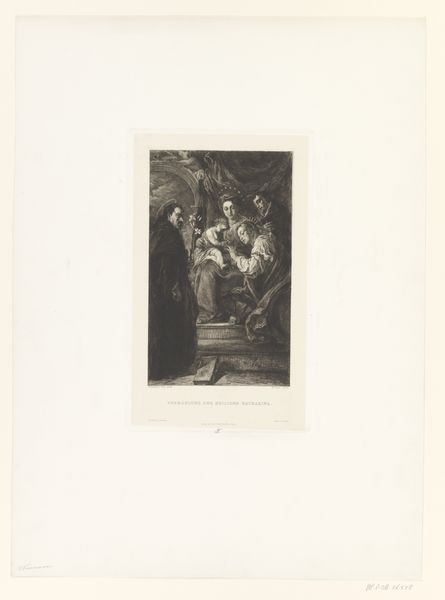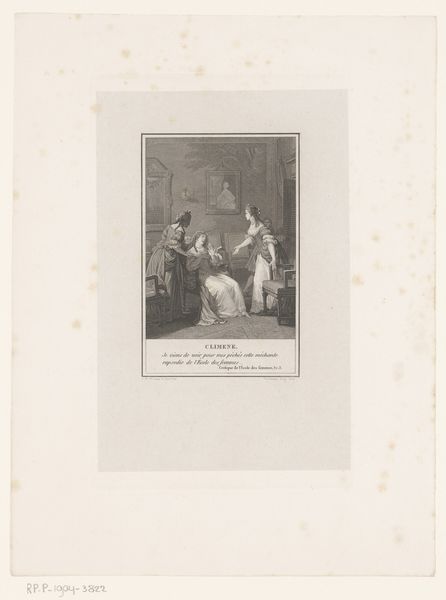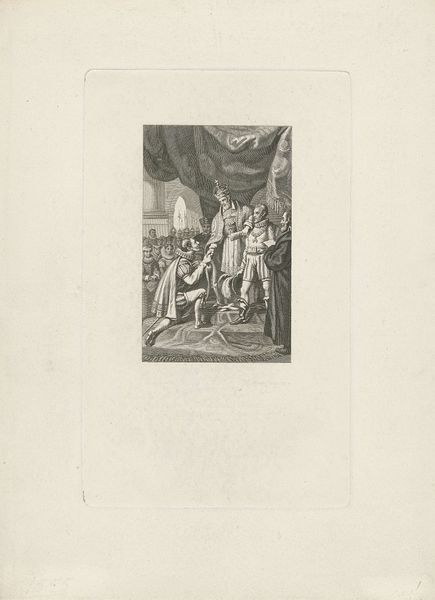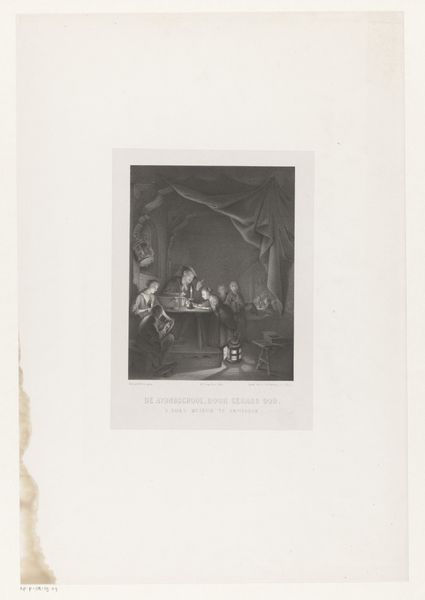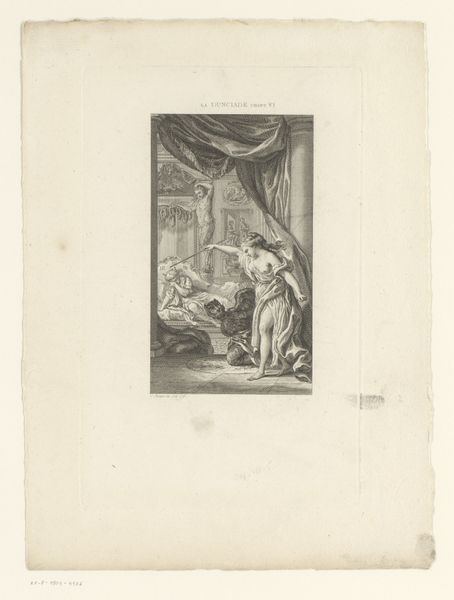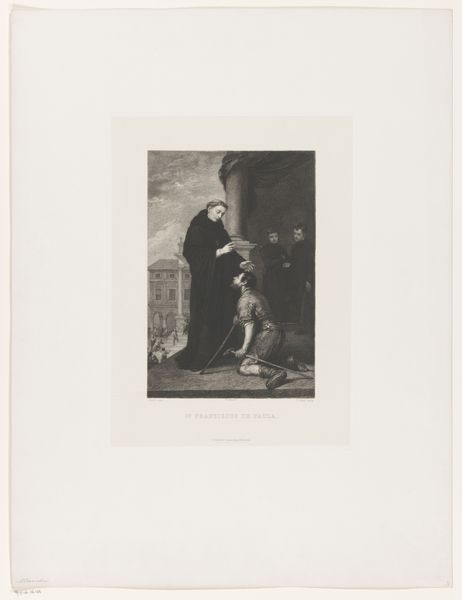
Gezin treurend rond zieke man 1822 - 1858
0:00
0:00
print, paper, ink, engraving
#
narrative-art
#
ink paper printed
# print
#
old engraving style
#
figuration
#
paper
#
ink
#
romanticism
#
line
#
genre-painting
#
history-painting
#
engraving
#
monochrome
Dimensions: height 310 mm, width 233 mm
Copyright: Rijks Museum: Open Domain
Curator: Hyacinthe-Louis-Victor-Jean-Baptiste Aubry-Lecomte created this engraving between 1822 and 1858. The work, currently held at the Rijksmuseum, is entitled "Gezin treurend rond zieke man." Editor: A melancholic scene. The use of monochrome lends the piece a timeless quality, accentuating the grief that seems to emanate from the family gathered around the ailing man. Curator: It is fascinating how the artist uses ink on paper to depict such a poignant domestic drama. Considering the date, think of the societal pressures, the labour involved in creating reproducible images meant for wider distribution. Were they meant to be decorative, educational, or subtly political? Editor: The composition is a careful arrangement of symbols. The bowed heads signify sorrow, a visual language understood across cultures. Notice the single light source, drawing our attention to the sick man as the heart of the family. What psychological weight does this image carry, touching on our fears of mortality and loss? Curator: It speaks volumes about 19th-century life, particularly the precariousness of health and the social networks that were both strained and strengthened during illness. Each line and shade is a testament to the engraver's skill, creating an image accessible to many through its print medium. Editor: Yes, the roof visibly caving inwards adds an inescapable element of gloom and despair – is it just structural weakness or a symbol of inevitable failure? The headscarf worn by the standing woman suggests piety but also resignation. And the girl shielding her face... that potent image of grief transcends time. Curator: The contrast between the smooth areas and densely engraved sections adds depth. Think of the production—the labor required to produce this in volume for distribution to households – were these intended as inexpensive artworks offering an easily accessible and affordable sentimental education? Editor: Seeing those universal gestures of grief rendered with such clarity—the cultural memory it evokes is overwhelming, isn't it? I leave with the distinct feeling this artwork prompts self-reflection on the human condition. Curator: I'm left pondering the social context, particularly regarding access to affordable artworks during that time, how people received and interacted with an artwork as accessible as this.
Comments
No comments
Be the first to comment and join the conversation on the ultimate creative platform.
